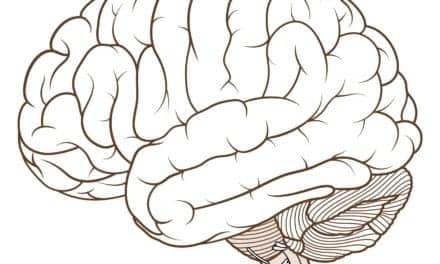By Sree Roy
When I first learned that a new home sleep test (HST) was “acoustic sensing-based,” I thought that meant it deciphered sleep apnea biomarkers from snoring sounds. But after speaking with Emilio Sanz, cofounder and co-CEO of Acurable, maker of the AcuPebble acoustic sensing-based HST that received US Food and Drug Administration clearance in 2021, at SLEEP 2023 I understood that internal body acoustics are what the device actually records and the software interprets.
“We’ve known for a long time that respiratory function generates sounds that are rich in physiological information. That’s why the stethoscope is one of the oldest medical devices,” Sanz told me.
The acoustics picked up by the sensor are not heard by human ears. “It is vibrations produced by physiological processes,” Sanz said. “A mixture of tiny sound signals from different body functions is corrupted by noise and interference. The system cleans and separates the signals, making them useful to clinicians by extracting clinically accepted indexes.” Since the device doesn’t record external sounds, the sleep study is not corrupted by other noises, such as a bed partner’s snoring.
The technological innovation of the AcuPebble HST is twofold, according to Sanz: One, that a wearable sensor less than 3 cm across can extract so much information; and two, how the algorithms make sense of that information.
“The big breakthrough with the technology is how to be able to separate a mixture of acoustic signals corresponding to a variety of physiological processes and extract from those the information that is needed for diagnosis,” Sanz said.
Unlike traditional cardiorespiratory HSTs that use one sensor per channel, the AcuPebble gathers all the information it needs from only two signals—SPO2 and acoustic—and the acoustic signal expands into a number of information channels. “Conceptually it is a change,“ Sanz said.
In Europe, where Acurable launched the AcuPebble acoustic sensing-based HST two years ago, the device has earned respect among sleep specialists, according to Sanz. In a 150-patient study comparing the AcuPebble to traditional cardiorespiratory home sleep testing, more than 97% of partipants reported a strong preference for the AcuPebble_SA100. Two expert clinicians, blinded to AcuPebble_SA100’s output, manually scored the cardiorespiratory HST y signals to reach a diagnosis, while AcuPebble_SA100 generated automated diagnosis. In all cases, AcuPebble_SA100 matched the experts’ diagnosis with positive and negative likelihood ratios over 10 and below 0.1, respectively. “You can base a clinical decision on therapy based on the output from this novel way of sensing the patient’s physiological status,” Sanz said.
“Body sounds contain acoustic signals from different physiological processes,” he added. “These processes change in the presence of disease, resulting in different characteristics for those sounds. By analyzing these sounds, we can give clinicians a complete sleep report and accurate diagnostic indexes.” The raw data is also available to clinicians.
Acurable is now focused on its US launch.
The US version of AcuPebble will have slightly different feeds than the HST available in Europe. “The channels are optimized for the US based on reimbursement and use case in the US,” Sanz said. It will be equivalent to a Type 3 HST and eligible for reimbursement code 95800, according to Sanz.
The London, England-based company is now finalizing operational requirements to enter the US market. The company will open a US office later this year (location to be decided), start to build its US team, and is in discussions with potential clinical partners. “We want to replicate what we did in Europe in the United States, which is to establish our device as not just another diagnostic device but rather as something that can provide a reliable sleep test with the benefits of a simple-to-use device but with the accuracy and reliability of a complete sleep report and a complete sleep test,” he said.
The company hopes to announce its first clinical partnerships later this year, which will help boost the technology’s credibility, Sanz said. “Once doctors trust the device, they can confirm that what we say is true,” Sanz said. “That has happened in Europe and has opened the doors.”
When the AcuPebble launches commercially in the United States, it will be available as a multi-use HST. Between patients, the sensor must be cleaned and charged and a new adhesive provided (the device sticks to the patient’s neck).
Sanz, for one, is excited for the AcuPebble HST to be available in the United States. “We raised money last year to come to the US,” he told me. “We think it’s the biggest opportunity for the company, so we’ll be dedicating significant resources to the market.”





